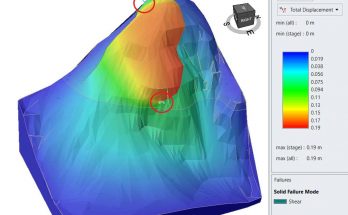Jaccaud Léonard
Directors: Prof. Michel Jaboyedoff and Prof. Stefan Schmalholz
The Kilchenstock peak is located in the Swiss Alps about 15 km south of the city Glarus. Many rockfalls from the Kilchenstock have been reported since the 19th century. The first study of this rock slope instability is done by Albert Heim in the 30s. The area is mainly composed of folded flysch with a stratigraphy predominantly dipping towards SSE. Heim reveals a sliding mass near the top of the mountain. This represents an unstable volume of 2.5 million cubic meters. At the foot of this area blocks break off and fall towards the town of Linthal 1000m below.
Heim measured velocities of the sliding mass from 1927 to 1932. On two occasions the displacement’s velocity has accelerated (up to 40mm per day) suggesting an imminent large rock-collapse. No catastrophic failure has occurred so far, however such an event remains possible and its characterization consists of the main objectives of the present study.
A detailed structural study is performed based on digital elevation model (DEM) as well as field investigations. The results show that the activity isn’t confined to the area described by Heim, but rather extends to the whole slope, suggesting a larger and deeper potential rock slope deformation at the Kilchenstock. This is supported by different signs of activity and geomorphic gravitation features such as rockfalls, scarps, double ridge, cracks. The existence of several contiguous or imbricated landslides constitute a complex instability who started with the retreat of the glacier
The final results of the study is a detailed geological map of the Kilchenstock and a cross-section in order to better explain which structural parameters constrain the unstable system.


